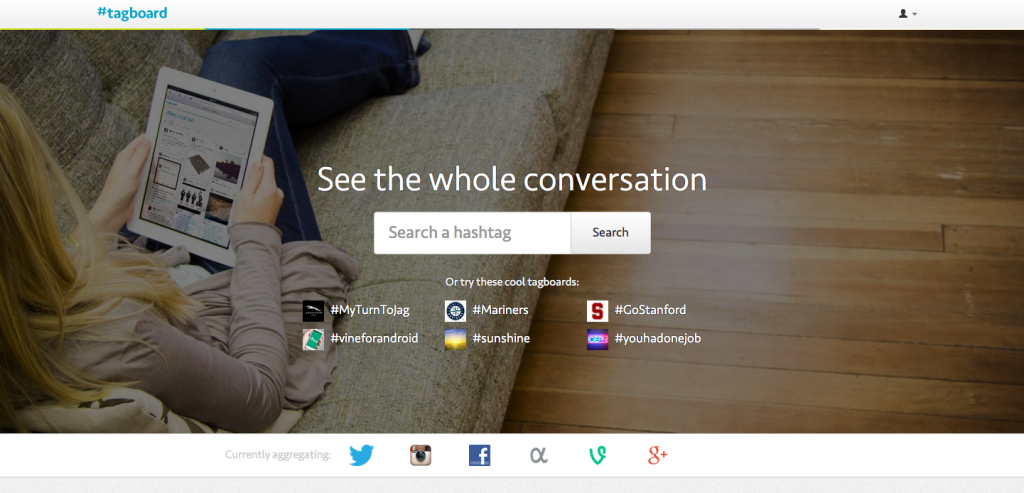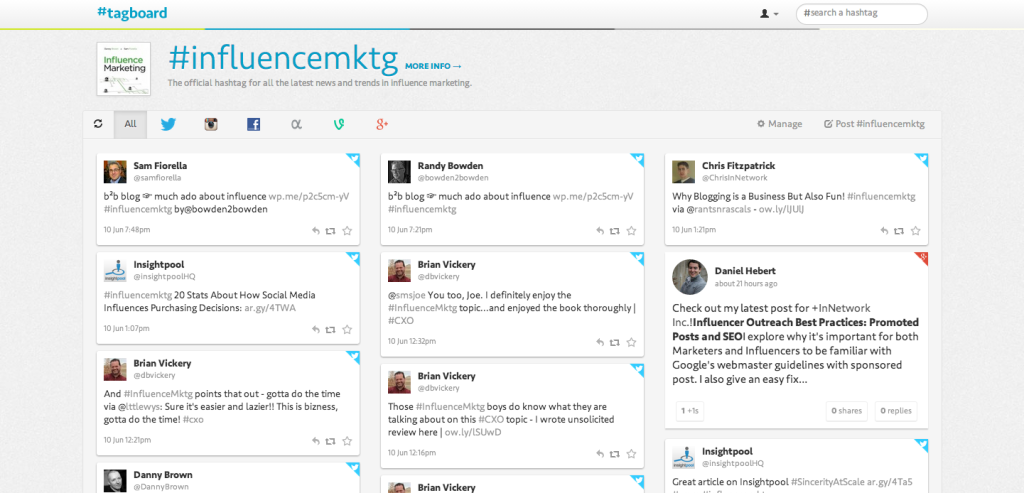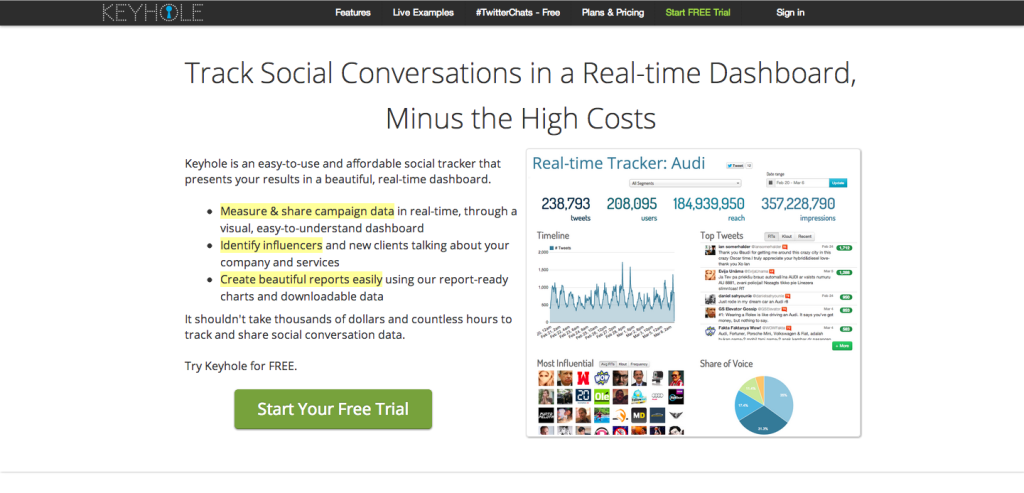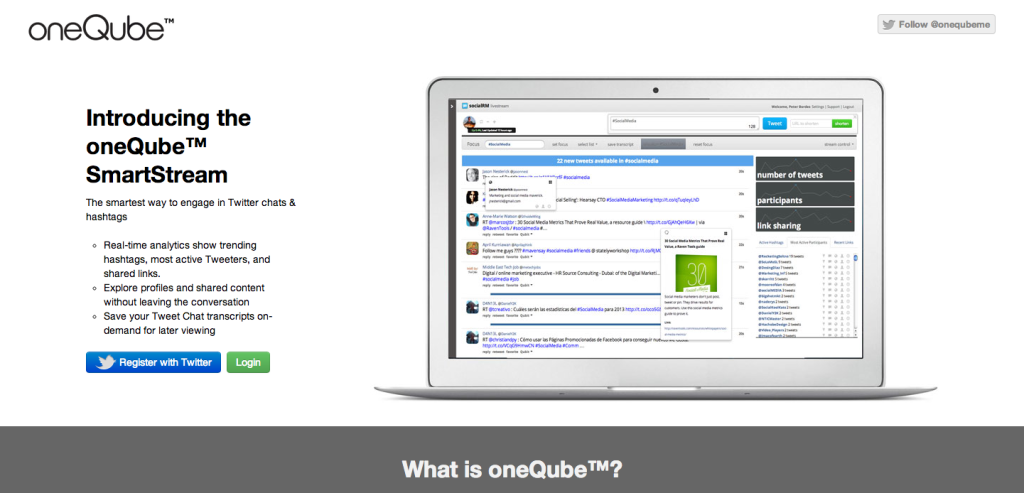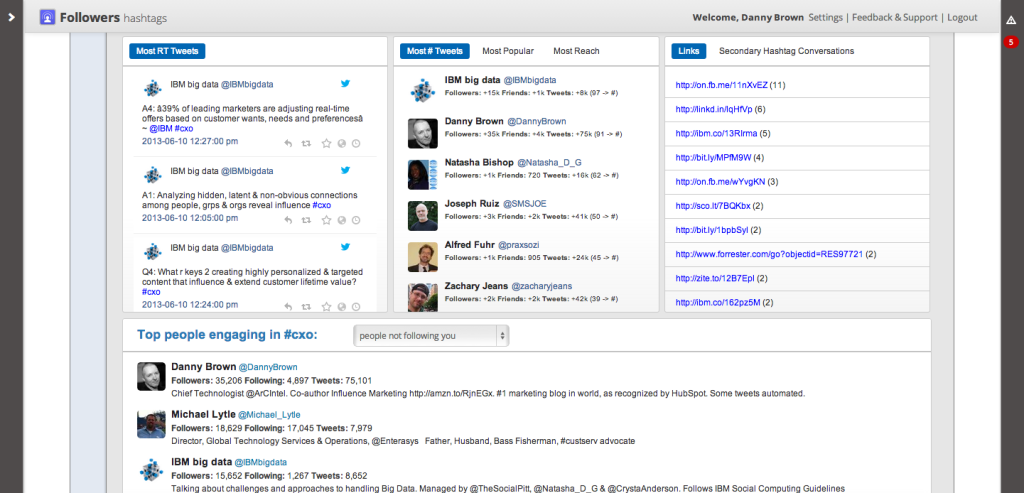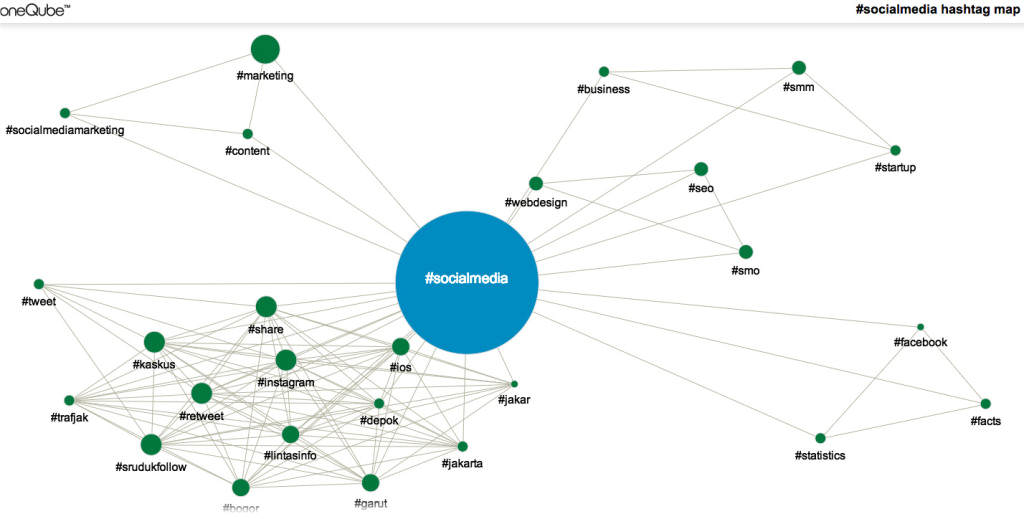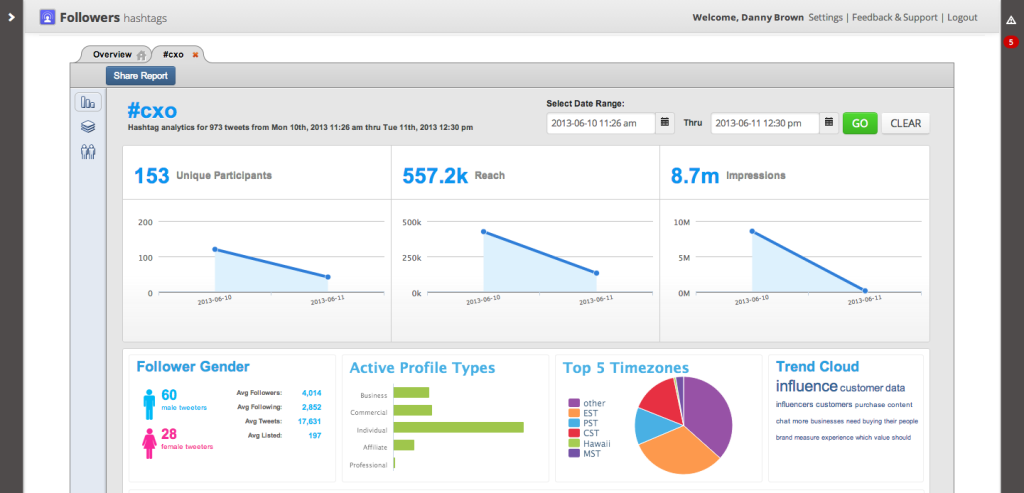Judging by the outcry over Tweetchat having to close, due to Twitter’s new API restructuring, and the interest shown in replacement platforms, it’s fair to say that Twitter chats continue to be popular for both Twitter users and brands alike.
The ease in which topics and conversations can be filtered using the hashtag on Twitter enforces the idea that, when done right, Twitter chats and their attached hashtags are a great way to solicit feedback, user experience, crowdsourcing and more.
To make that ease even more effective, here are three cool hashtag trackers that don’t need a second mortgage to use.
1. Tagboard
The first platform is one I came across just last week, called Tagboard.
Working out of Redmond, Washington, Tagboard allows you to view hashtags across multiple networks. They currently support Twitter, Instagram, Facebook, App.net, Vine and Google+.
You can either track popular hashtags currently happening across these platforms, or create your own to monitor. Below is an example of the one I created around the Influence Marketing book hashtag.
You can either view all conversations across the platforms your hashtag is active on, or use the top navigation to filter out the channel(s) you wish to concentrate on.
If you want to join the conversation, you can reply directly on Twitter via the Tagboard panel, or click the comment/reply option for the likes of Google+ and Facebook and be taken directly to the discussion on that platform.
While fairly simple at the minute, Tagboard offers a clean and uncluttered snapshot at who’s talking about what, and on what platform, when it comes to your chosen topic.
Pros: Free to use (currently), clean, ability to upload logo for some personalization, multiple channels.
Cons: Limited customization, no analytics, no embed feature, no live stream option. (Note – these are available to users that contact Tagboard and request these features turned on, with price to be determined.)
2. Keyhole
Next up is Keyhole, from Waterloo, Ontario in the technology heart of Canada.
The pet project of technology whiz-kids Saif Ajani and Minaz Abdulla, Keyhole was originally built as a personal solution to the pain that often comes with trying to track Twitter conversations. That solution became Keyhole and is used by several brands today.
What I like about Keyhole is it goes a little bit deeper than standard impressions and reach (although they’re still catered for here). Instead, you can find out more about your demographics and where they’re sharing the conversation.
In the image above, for example, you can see a conversation around car manufacturer Audi. As well as the numbers around tweets, users, reach and impressions, you can dee who had the most retweets, what their Klout score is, and top recent tweets around the topic.
When you set up a hashtag to track, you gain access to even more information.
Other useful data provided includes:
- The Top Sites section allows you to see what domains were mentioned using that hashtag, and what tweets sent traffic there;
- Share of Voice shows which vehicle is being spoken about the most;
- Most Influential informs who gets the most retweets, who has the biggest Klout score, and who talks about the brand the most.
Add in Location, Demographics, Topics based on Hashtags or Keywords, and Top Sources for tweets, and Keyhole offers a fairly sturdy platform for solo users and brands alike.
Pros: Lots of useful data, clean layout, three monthly pricing models ($14, $39, $99), downloadable reports, embed options.
Cons: Only for Twitter, no way to respond to a tweet from inline.
3. oneQube SmartStream
Located in New York and built by Internet Media Labs, oneQube and its SmartStream product offers a host of solutions for anyone looking to really dig deep into Twitter chats and their accompanying hashtags.
While oneQube offers more than just SmartStream, it’s that part of the oneQube jigsaw that offers the most potential for hashtag users and trackers.
By setting a hashtag, you can not only track it, but use the oneQube dashboard as a social dashboard, along the lines of Tweetgrid and Hootsuite. This allows you to seamlessly take part in a conversation you’re tracking, without the need for multiple dashboards.
But that’s bread and butter stuff – the real meat comes from the data you can glean from SmartStream around the hashtag in question.
Much like Keyhole, you can see the most engaged, the most retweets, and the most “influential” users around a topic. However, where SmartStream really gets interesting is with the extra data they provide around that basic information.
If you look to the right of the image above, you can see a section called Secondary Hashtag Conversations. This allows you to see topics that could be related to the core one you’re discussing, offering an opportunity for brands and Twitter chat moderators to reach a wider audience.
SmartStream also offers a handy hashtag map that lets you see how closely tied these other conversations are to yours – the larger the circle, the bigger the relevance and opportunity.
On top of that, you also have access to detailed information around not only the standard demographics of your hashtag participants, but additional data-points like the type of profile (Business, Individual, Commercial, etc.), as well as the trending topics around that discussion.
This kind of information is useful for brands, obviously, but it also allows Twitter chat moderators to provide extra details about the type of people their chat attracts, which can help them find sponsors to work with. You can find a detailed guide to SmartStream here.
Pros: Currently free in beta mode, detailed anlaytics, hashtag map for connected topics, integrated social dashboard.
Cons: Currently suffering from bugs (the SmartStream fails to load), no threaded conversations option on the dashboard, Twitter only.
Your Turn
These are just three platforms that have caught my eye when it comes to hashtag tracking. Each has their Pros and Cons, which I’ve shared here. It must be noted that beta products do tend to suffer their fair share of bugs, so keep that in mind when coming up against any glitches.
How about you – what tools do you currently use for hashtag tracking and Twitter chats, and why these ones? Share in the comments below.

